When you ask “what caliber did the cowboys shoot?” the answer lives at the crossroads of history and sport. In Cowboy Action Shootinga competitive shooting discipline that recreates the firearms, clothing, and manners of the Old West participants must use period‑appropriate guns and ammo, which forces a look back at the real cowboy’s cartridge choices.
Why the Caliber Matters in Both History and the Range
The Old West wasn’t a monolith of one‑size‑fits‑all firearms. Ranchers, outlaws, and lawmen each selected rounds that matched their pistols, rifles, and the logistics of the frontier. Modern cowboy caliber enthusiasts care about authenticity, recoil, and the ability to feed reliable ammunition on the range. Understanding which cartridges were truly common helps you choose the right load for competition and for a taste of genuine history.
Signature Calibers of the Real Cowboys
Three cartridges dominate the historical record: the .45 Colt, the .44‑40 Winchester, and the .38‑40 Winchester. They were chambered in the most popular revolvers and lever‑action rifles of the 1870s‑1890s.
.45 Colta large‑bore revolver cartridge introduced in 1873 for the Colt Single Action Army was the official sidearm of the U.S. Army’s “Peacemaker.” Its 230‑grain lead bullet offered stopping power at short ranges, making it a favorite among lawmen and cattle‑rustlers alike.
.44‑40 Winchestera dual‑purpose cartridge designed for the Winchester Model 1873 rifle and Colt revolvers emerged as the frontier’s “all‑purpose” round. At 200 grains, it balanced velocity (≈1,200 ft/s) and recoil, letting a cowboy carry one ammo type for both his rifle and sidearm.
.38‑40 Winchestera lower‑pressure cartridge often used in early Winchester rifles and popular as a training round offered milder recoil, which made it a common choice for younger shooters or those who preferred faster follow‑up shots.
How Cowboy Action Shooting Adapts Those Calibers
CAS rules require period‑correct firearms, but they allow modern reproductions that fire the same *cartridge dimensions*. Most shooters use the original .45 Colt, .44‑40, or .38‑40 loads, though some competitions permit modern equivalents like the .357 Magnum in a converted revolver. The key is that the external dimensions match the historic round, preserving the authentic look and feel.
For example, a Colt Single Action Armythe iconic 1873 revolver known as the ‘Peacemaker’ in CAS is typically chambered for .45 Colt. If you load it with .45 ACP (a different case), the competition would disqualify you because the cartridge’s overall length and rim dimensions differ.
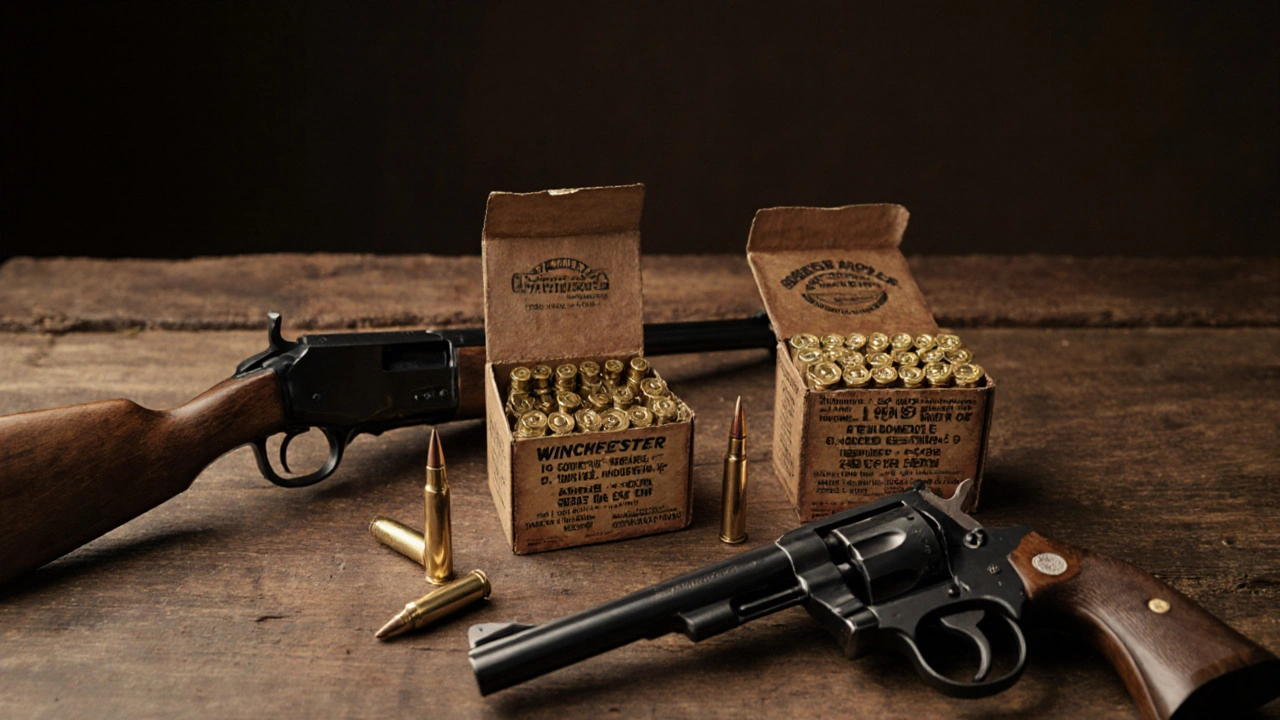
Comparison of the Three Classic Cowboy Cartridges
| Cartridge | Bullet Diameter (in) | Typical Bullet Weight (gr) | Muzzle Velocity (ft/s) | Common Firearms |
|---|---|---|---|---|
| .45 Colt | 0.452 | 230 | 850‑950 | Colt Single Action Army, Remington 1866 rifle |
| .44‑40 Winchester | 0.423 | 200 | 1,200‑1,250 | Winchester Model 1873, Colt Single Action Army |
| .38‑40 Winchester | 0.401 | 180 | 1,050‑1,100 | Early Winchester rifles, some Colt revolvers |
Modern Alternatives That Still Fit CAS Rules
While purists stick to the original loads, many shooters appreciate the reliability of newer ammunition. The .357 Magnuma high‑pressure revolver cartridge developed in 1934, often compatible with .38 Special firearms can be used in a converted Colt if the barrel is cut to accept the larger case. Likewise, the .30‑30 Winchester, though a later hunting round, is allowed in lever‑action rifles built to period specifications.
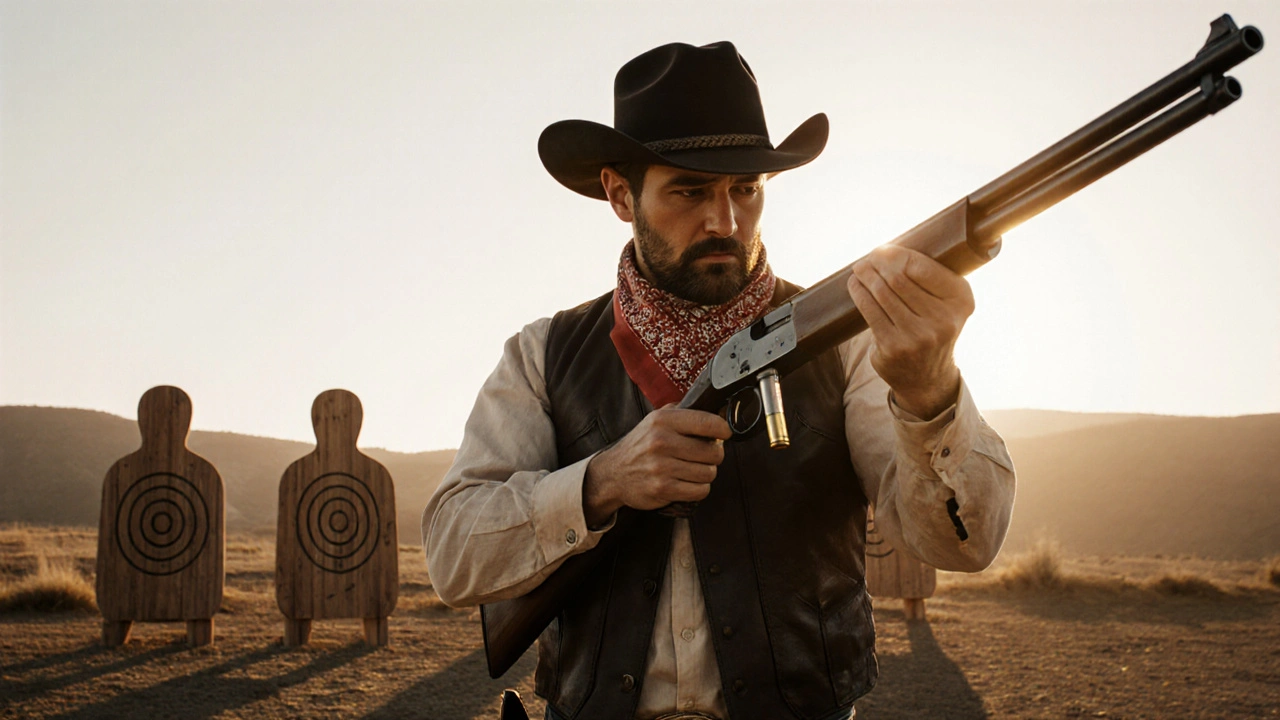
Choosing the Right Caliber for Your First Competition
- Recoil tolerance: New shooters may start with .38‑40 or .357 Magnum for a softer kick.
- Ammo availability: .45 Colt and .44‑40 are widely produced by specialty manufacturers; .38‑40 can be harder to find and sometimes requires hand‑loading.
- Firearm ownership: If you already own a Colt Single Action Army, .45 Colt is the natural choice; a Winchester Model 1873 pairs perfectly with .44‑40.
- Competition class: Some CAS leagues have “Original Caliber” divisions that restrict you to the exact historic load, while “Modern” divisions allow .357 Magnum or .30‑30.
Practical Tips for Buying and Hand‑Loading Cowboy Calibers
- Buy from reputable reloaders who specialize in “Old West” ammo; companies like Woodchuck Ammo and Leprechaun Arms certify their .45 Colt meets SAAMI specs.
- If you reload, start with a small‑bench powder charge-historically, black powder loads were around 20‑25 grains for .45 Colt. Modern smokeless powders need far less, typically 4‑5 grains, to avoid excessive pressure.
- Use cast lead bullets for authenticity; they match the original soft‑lead projectiles and reduce barrel wear.
- Check your firearm’s proof marks. Some antique rifles are not proofed for smokeless powder; a lower pressure “black‑powder‑equivalent” load is safer.
- Always clean the barrel after shooting black‑powder loads; corroded residue can affect accuracy.
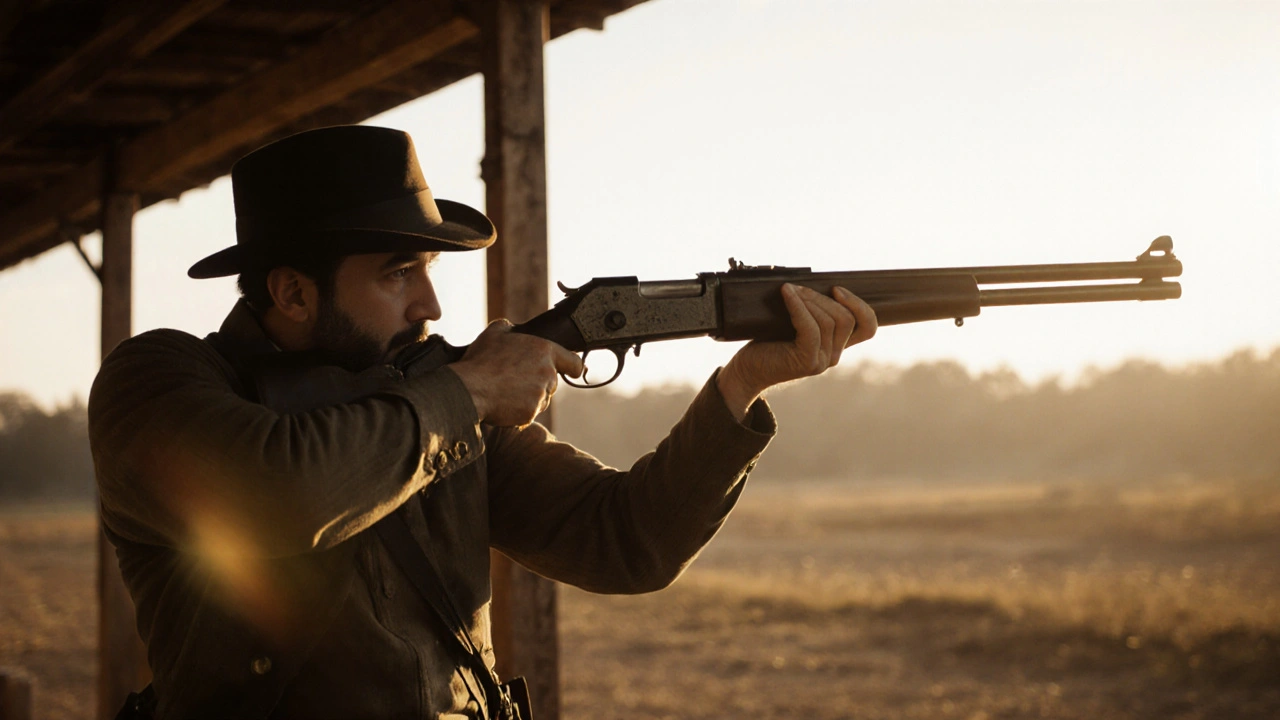
Common Misconceptions About Cowboy Calibers
Many people think every cowboy carried a .45 Colt, but records show a mix of firearms depending on geography and personal preference. In Texas, .44‑40 was common because the Winchester Model 1873 was cheap and versatile, while in the mountain West, the longer‑range .45‑70 (a rifle round) saw more use.
Another myth: all CAS shooters must fire genuine antique ammunition. In reality, the sport encourages safe, modern reproductions that mimic the dimensions of historic cartridges while offering consistent performance.
Mini FAQ - Your Quick Answers
Which caliber is best for a beginner in Cowboy Action Shooting?
Most beginners start with .38‑40 Winchester or .357 Magnum because they have milder recoil and ample ammunition supply.
Can I use modern .45 ACP in a Colt Single Action Army for CAS?
No. Even though .45 ACP shares the same bullet diameter, its case length and overall dimensions differ, so it’s not legal in CAS.
Where can I purchase authentic‑looking .44‑40 ammunition?
Specialty ammo manufacturers like Leprechaun Arms and Cimarron Firearms ship small boxes of .44‑40 that meet original specifications.
Is black powder still allowed in CAS?
Many clubs permit black‑powder loads for historical authenticity, but you must follow strict safety guidelines and use approved firearms.
Do I need a federal firearms license to compete in CAS?
No special license is required beyond the standard federal and state permits for owning the firearms you’ll shoot.
Next Steps - Get Ready for Your First Match
Pick a caliber that matches the gun you already own or plan to buy, source a small box of authentic‑dimension ammo, and schedule a range day with a local CAS club. Most clubs welcome newcomers and can help you fine‑tune your load for the best balance of recoil and reliability. Happy shooting, and enjoy the feel of true “cowboy” firepower on the range!

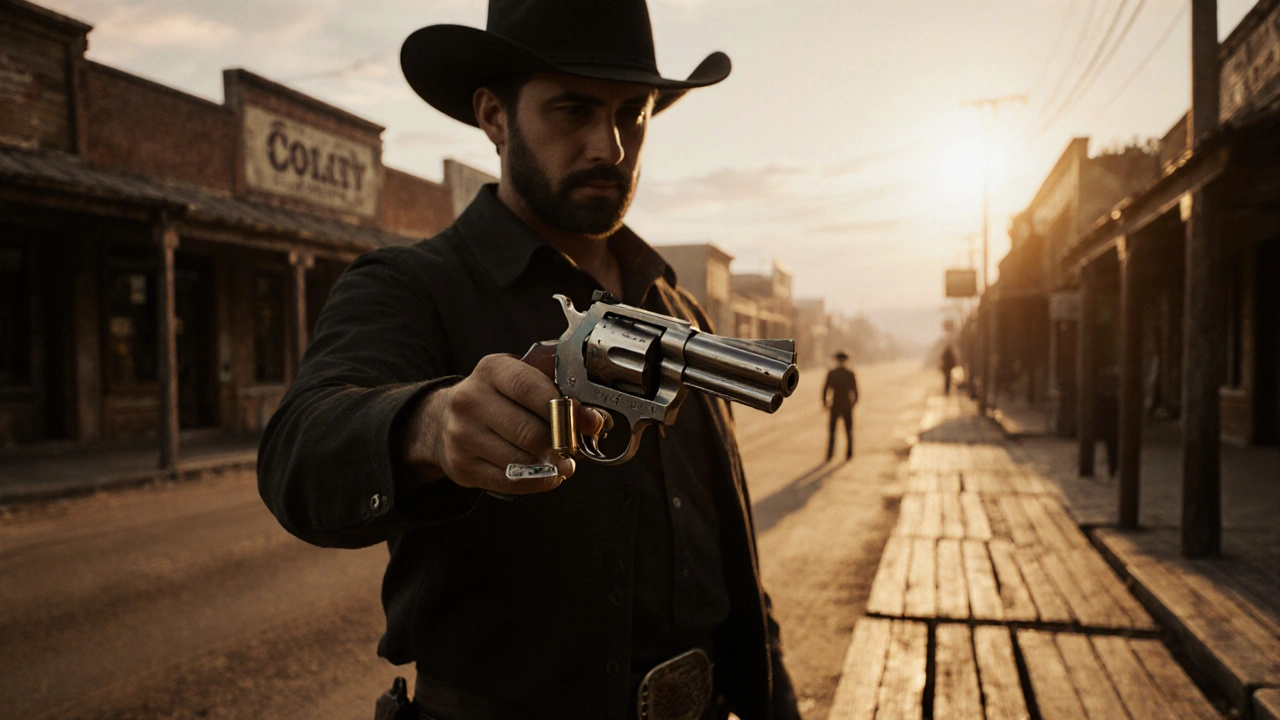

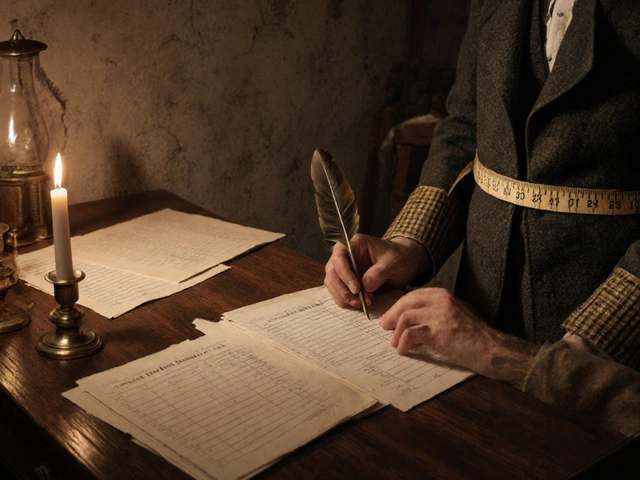
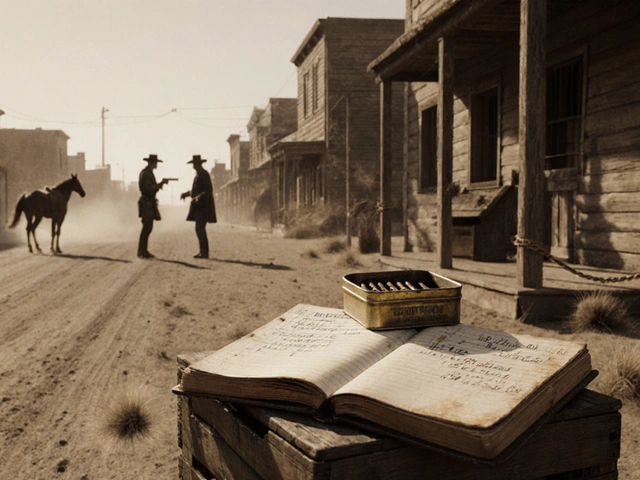
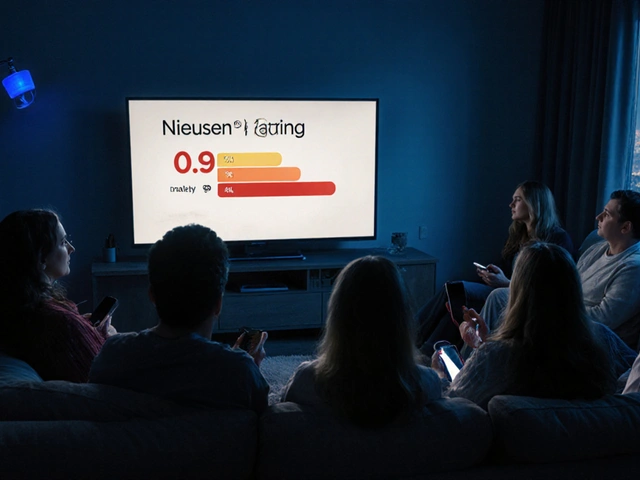

Bill Castanier
October 21, 2025 AT 15:08